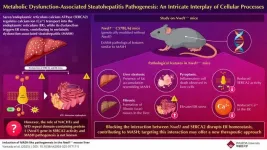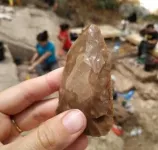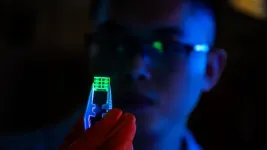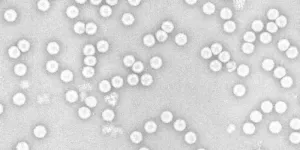Metabolic dysfunction-associated steatohepatitis (MASH) is a liver disease that progresses without symptoms and is associated with significant global public health concerns. It is prevalent in 30% of the population worldwide and poses a risk of advancing to cirrhosis and liver cancer. MASH is marked by lipid droplet accumulation in the liver, progressing from steatosis to inflammation and cell damage, ultimately leading to fibrosis, cirrhosis, and hepatocellular carcinoma. A clear understanding of cellular processes in MASH pathogenesis is essential for developing targeted therapies.
A key factor in the pathology of MASH is the disruption of endoplasmic reticulum (ER) homeostasis. The ER stores calcium ions (Ca2+) and plays a crucial role in regulating protein folding, lipid transfer, and organelle dynamics. The accumulation of unfolded or misfolded proteins in the ER activates a series of homeostatic responses known as ER stress, and sustained ER stress plays a role in the development of MASH. Recent studies indicate that the dysfunction of sarco/ER calcium ATPase (SERCA2), which regulates Ca2+ transport to the ER, can also induce ER stress, contributing to MASH.
In addition to SERCA2, previous research on NACHT and WD repeat domain-containing protein 1 (Nwd1) gene, which is part of the signal transduction ATPase family, has shown that it is localized in the ER and is expressed in both the liver and the brain. However, the role of the Nwd1 gene in SERCA2 activity and the pathogenesis of MASH remains unclear.
In a recent study, published on March 11, 2025, in Communications Biology, a team of scientists led by Professor Shin-ichi Sakakibara from the Laboratory for Molecular Neurobiology, Faculty of Human Sciences, Waseda University, Japan, explored the physiological role of Nwd1 in MASH pathogenesis.
“The full mechanism behind the development of MASH remains unclear, and currently, only one therapeutic drug has been approved. Therefore, this study aimed to investigate the role of the Nwd1 gene in liver pathogenesis to identify potential new therapeutic targets. Our research is the first to explore the role of Nwd1 outside of the brain,” says Dr. Sakakibara.
The team created a Nwd1 knockout (Nwd1−/−) mice model using the CRISPR-Cas9 genome editing technique. They subsequently investigated the effects of Nwd1 deficiency on liver function and various cellular processes. The scientists found that Nwd1−/− mice exhibited liver pathologies, including excessive lipid accumulation, fibrosis, and heightened ER stress, mirroring MASH. Additionally, they saw a rise in pyroptosis—a form of programmed inflammatory cell death—in the livers of Nwd1−/− mice. Elevated levels of cleaved caspase-1 and increased leukocyte counts were also observed, indicating heightened inflammatory responses that further exacerbated liver damage. The researchers also discovered that Nwd1 interacts with SERCA2. They found that in the absence of Nwd1, SERCA2 activity was significantly reduced, leading to diminished ER Ca2+ storage and intensified ER stress. This stress was directly linked to the accumulation of lipid droplets in hepatocytes, a hallmark of MASH.
The first co-author, Dr. Seiya Yamada, stated, “These findings position Nwd1 as a potential regulator of liver homeostasis, particularly through its role in maintaining ER function and calcium balance.”
Overall, by demonstrating how Nwd1 deficiency disrupts these processes, the study offers fresh insights into MASH pathogenesis and underscores the therapeutic potential of targeting ER stress pathways.
“With MASH lacking effective treatments, understanding the molecular underpinnings of its development is crucial. This study paves the way for future research exploring Nwd1 as a therapeutic target, potentially leading to novel strategies to combat this growing public health issue,” concludes Dr. Yamada.
***
Reference
Authors: Seiya Yamada1,2*, Hayato Ogawa1, Miona Funato1, Misaki Kato1, Kazuhiko Nakadate3, Tomoya Mizukoshi1, Kiyoharu Kawakami3, Ryosuke Kobayashi4, Takuro Horii4, Izuho Hatada4,5, and Shin-ichi Sakakibara1
Title of original paper: Induction of MASH-like pathogenesis in the Nwd1−/− mouse liver
Journal: Communications Biology
DOI: 10.1038/s42003-025-07717-5
Affiliations
1Laboratory for Molecular Neurobiology, Faculty of Human Sciences, Waseda University, Japan
2Neuroscience Center, HiLIFE - Helsinki Institute of Life Science, University of Helsinki, Finland
3Department of Basic Biology, Educational and Research Center for Pharmacy, Meiji Pharmaceutical University, Japan
4Laboratory of Genome Science, Biosignal Genome Resource Center, Institute for Molecular and Cellular Regulation, Gunma University, Japan
5Viral Vector Core, Gunma University Initiative for Advanced Research (GIAR), Gunma, Japan
About Waseda University
Located in the heart of Tokyo, Waseda University is a leading private research university that has long been dedicated to academic excellence, innovative research, and civic engagement at both the local and global levels since 1882. The University has produced many change-makers in its history, including nine prime ministers and many leaders in business, science and technology, literature, sports, and film. Waseda has strong collaborations with overseas research institutions and is committed to advancing cutting-edge research and developing leaders who can contribute to the resolution of complex, global social issues. The University has set a target for achieving a zero-carbon campus by 2032, in line with the Sustainable Development Goals (SDGs) adopted by the United Nations in 2015.
To learn more about Waseda University, visit https://www.waseda.jp/top/en
About Professor Shin-ichi Sakakibara
Shin-ichi Sakakibara is a professor at the Laboratory for Molecular Neurobiology, Faculty of Human Sciences, Waseda University. He earned his Ph.D. from the University of Tokyo and specializes in neuroscience, focusing on neural development, molecular biology, histology, and neuroanatomy. He has an exceptional academic record with 50 papers in Scopus and over 4,350 citations, reflected in an h-index of 23, showcasing his significant impact in the field. He holds professional memberships in organizations such as the Japan Neuroscience Society, the Japan Society for Neurochemistry, and the Society for Neuroscience. His research interests include neuroanatomy, neural stem cells, neurogenesis, and glial cells.
END









